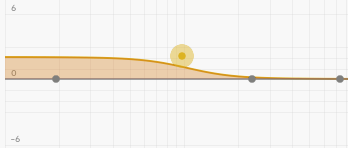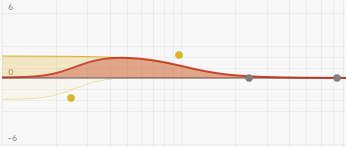Dual shelves instead of a bell
When I’m working on the low end of the frequency spectrum, oftentimes I prefer to use two shelves rather than a bell-shaped EQ.
The way this works in my mind is in a sort of sequential process. First, I notice that the thing I’m working on (a kick drum, a bass, the entire mix) is a bit light in the low end. Not hitting hard enough or not warm enough or both.
So I’ll put on a low shelving EQ. Typically if I’m working on a master I’ll start with a fairly low Q, so the slope is very gentle and natural and doesn’t sound like I’m using EQ. For example, here’s a +2 dB-ish boost around 100 Hz with a Q of 0.7:
I like using shelves because they’re nice and general. It’s basically “this frequency and everything below it.” Simple.
See how gentle that Q=0.7 slope is? It extends close to 300 Hz. Q=0.7 is a good starting place for a boost on the master; it’s general, not specific, natural-sounding, and it won’t sound like you’re EQing.
So then I’ll continue on with whatever I’m working on next, and at a certain point I might realize that, while my low-end boost was generally great, there’s a bit too much sub activity.
Instead of reworking my initial EQ, which would mean I was messing with all the good stuff that drew me to it in the first place, what I like to do is to put another low shelf EQ on, in addition to the first one, to address the new issue. So, instead of changing, building upon.
Maybe the very low end got a bit tubby or there’s too much sub on the kick and it’s dragging the energy down. I might resolve that by putting another shelf at, say, 25 Hz, down a dB or so, with a slightly tighter Q, perhaps more like 1.0:
And here’s the net result:
Look at that cool curve! It’s smooth and not abrupt or dramatic anywhere, which means it won’t have a ton of phase distortion, which can be key on the low end. It’s gentle on the top side, and slightly more abrupt on the bottom side — both of which are independently customizable, unlike with a bell EQ. And the top center part isn’t a continuous curve, but rather has some flatness to it, so that the part I’m emphasizing between the curves has some solidity and stability. Lots to like.
— Jamie Two Shelves



